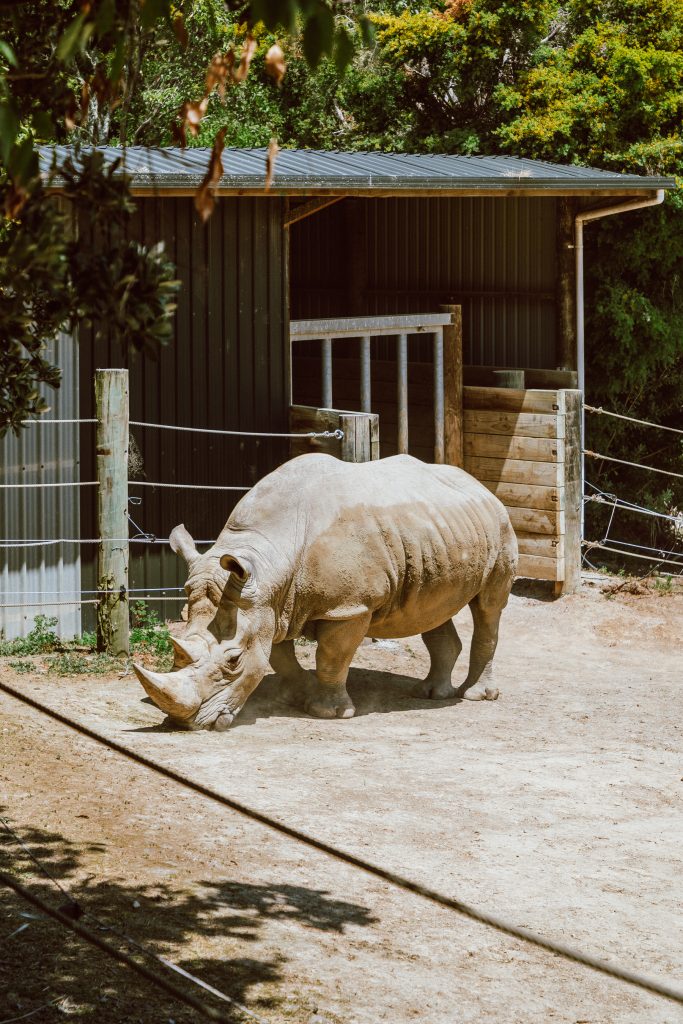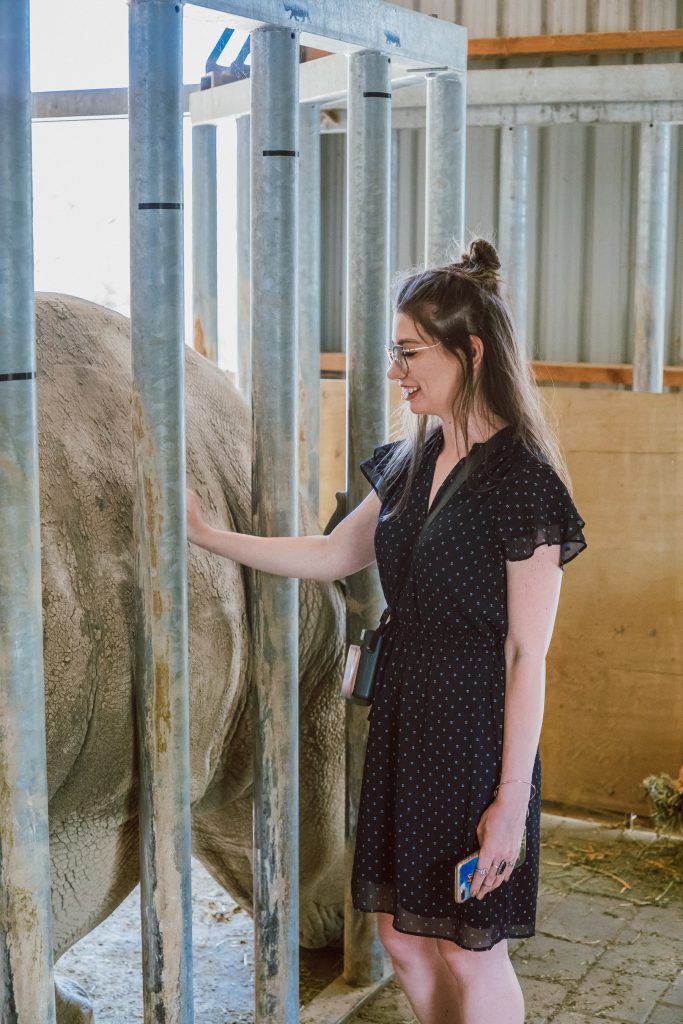Slow, calm, with thick rough skin and massive horn – rhinos have been roaming Earth for over 50 million years. To put it into perspective, dinosaurs become extinct 66 million years ago and humans are only hanging around for less than 300,000 years. Forget long times, here is something terrifyingly close – if we do nothing, these prehistoric creatures might become just another chapter of a history book by 2025!
There are only about 27,300 rhinos left in the world now and most of them live in zoos and conservation areas. The wild, that had been their home for millions of years, is now too dangerous – approximately one rhino is being killed in the wild every eight hours. Who does that? Make a guess…
Most of the deaths are caused by illegal poaching – people are hunting for rhino horns that are more expensive on the black market than gold, diamonds or cocaine ($110,00 per kg or around $400,000 per horn in case you needed the exact figure for some reason). Some believe it’s a highly effective medicine that can treat everything from tooth pain to cancer, others just want to possess a horn as a visual confirmation of their prosperity and status. The truth is, horns are nothing else but pure keratin. Yes, just like your hair and nails. Not that were they made of diamonds, they would be worth leaving suffering animals bleed to death. But keratin! How insane is this world?
It’s been illegal to sell or buy rhino horns since 1977, yet 2007-2014 years saw a 9,000% increase in rhino poaching. Thankfully, 259 fewer rhinos had been poached in 2018 compared to 1,028 in 2017. A positive shift doesn’t mean rhinos are now out of danger. This horror story is happening right now and if you want your kids and grandkids to be able to see rhinos in real life, let’s discuss what we all can do to help them.
What rhinos still exist?
There are five different species still leaving on Earth – two African and three Asian. Well, technically, six but that’s the part that makes me cry: there are only two (two!) Northern White Rhinos left and both are female, which means they are formally already extinct. In 2011, we’ve also lost Western Black Rhino.
Out of five, three are critically endangered – Javan (under 65 left), Sumatran (less than 100) and Black Rhino (around 5,000). Asian Greater-One Horned Rhinos went from 600 in 1970s to 3,500 now, which places them in a ‘Vulnerable’ category.
African Southern White Rhino is a true conservation miracle – from 100 species in early 1900, there are now over 20,000 of them. So, that’s the only rhino type classified as ‘Nearly endangered’. That’s the power people have when they unite and do something good together. Many zoos all over the world started special breeding programmes and are donating money to organisations helping rhinos. Our Hamilton zoo is one of them, by the way – seven white rhinos were born here! And 10% of money raised from Face2Face encounter with rhinos goes to Hamilton Zoo Conservation Fund, supporting Save the Rhino International.
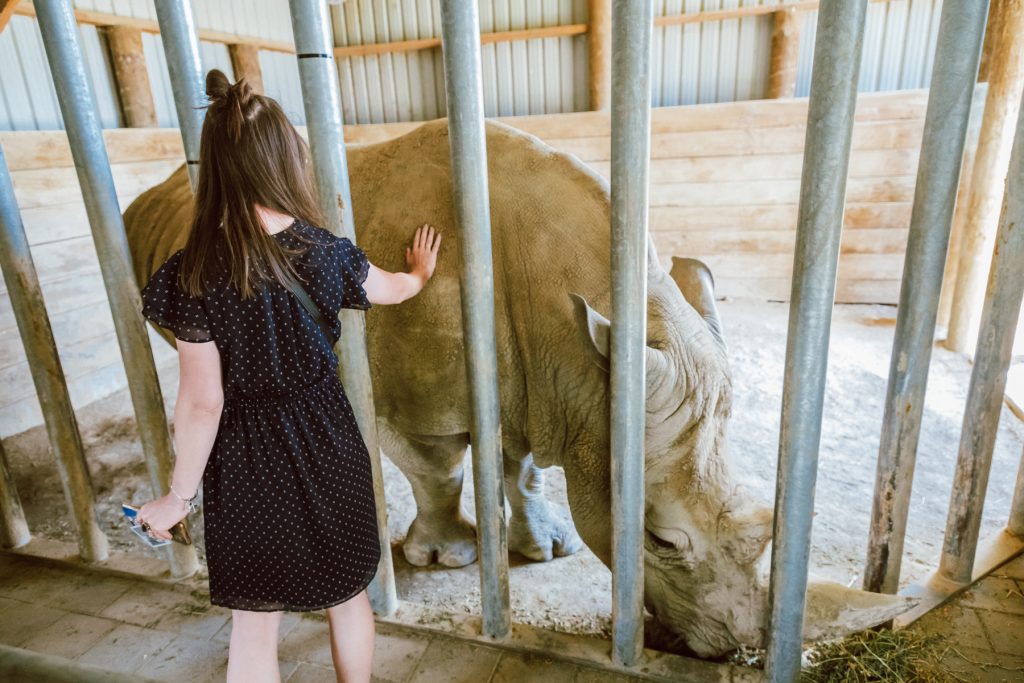
We have recently visited Hamilton Zoo and met rhino – the whole activity happens only if and for as long as the animal wants that. It’s free to leave the house, where you get up close and personal with them, at any time or might even decide not to walk inside and then there will be no encounter.
How to help rhinos without donating money
‘But wait, I can hardly feed myself, how the hell can I help rhinos?!’ If that’s what you’re thinking right now, keep on reading. Though donation
First of all (and I hope I didn’t even need to say that) – do NEVER buy any products made of rhino horns. No medicine, no fashion accessories, no ‘art objects’ – nothing is worth the torture innocent animals are going through for that. Moreover, it’s illegal.
Go palm-oil free. If there is no way you can live without the palm oil, at least make sure it’s CERTIFIED sustainable (‘sustainable’ without ‘certified’ is a warning sign).
Remember my article about the ways to help Amazon forests? You can learn more about the harm palm oil causes to nature and wild animals from it.
The same with paper and wood. FSC-certified forest products can’t come from illegal logging, which, once again, means less deforestation and forest conversion.
Raise awareness. Can you imagine, many people still have no idea that rhinos are under a threat of becoming extinct! If we don’t talk about this, how would they know? And they might have money and opportunities to help. Speak, educate, encourage!
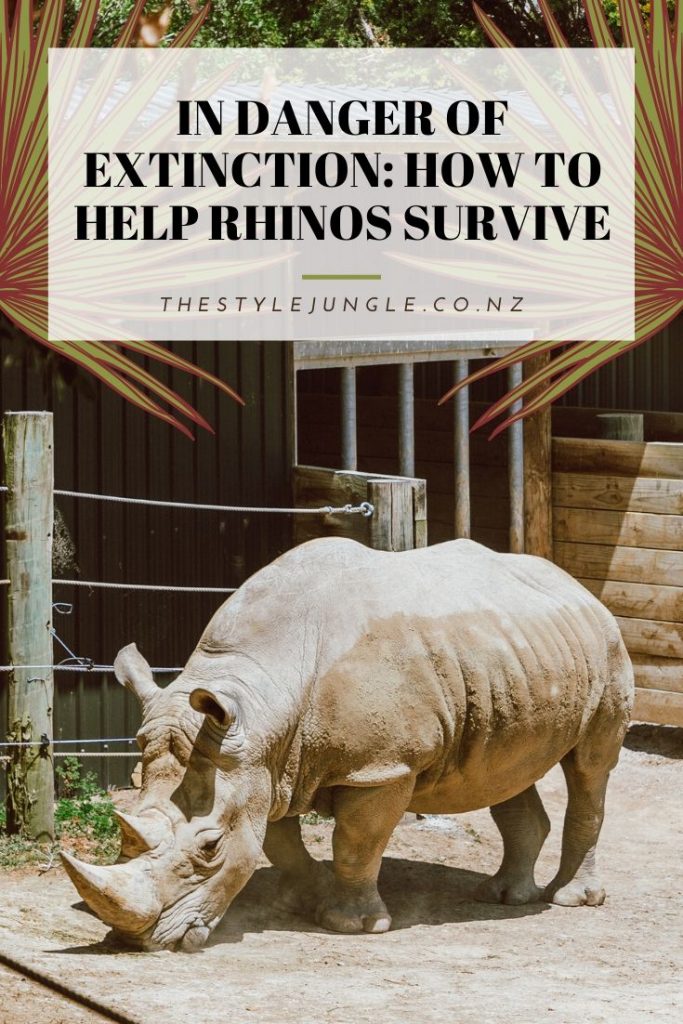
Drink. I’ve found this brand ‘
Volunteer. Love
Financial support for rhinos
Visit a zoo. I’ve been against all zoos for many years – keeping wild animals where they don’t belong can’t be anything but cruel, right? After visiting Hamilton Zoo, I realised it’s not always so black and white. Modern ethical zoos are devoting their time to help endangered animals survive and to educate people and raise awareness. Some New Zealand zoos are participating in breeding programmes and donating money to conservations and organisations working with rhinos in Africa and Asia. Hamilton Zoo supports Save the Rhino International, Auckland Zoo supports the Lowveld Rhino Trust Zimbabwe, Orana Wildlife Park in Christchurch works closely with The Australian Rhino Charity Project, etc. By visiting them and talking to zookeepers you’re already helping!
Tusk & Horn Wildlife Trust. This is the only New Zealand
Adopt a rhino. From as low as $25 various
Some more
Every little help counts and I believe that together we can save these precious creatures!
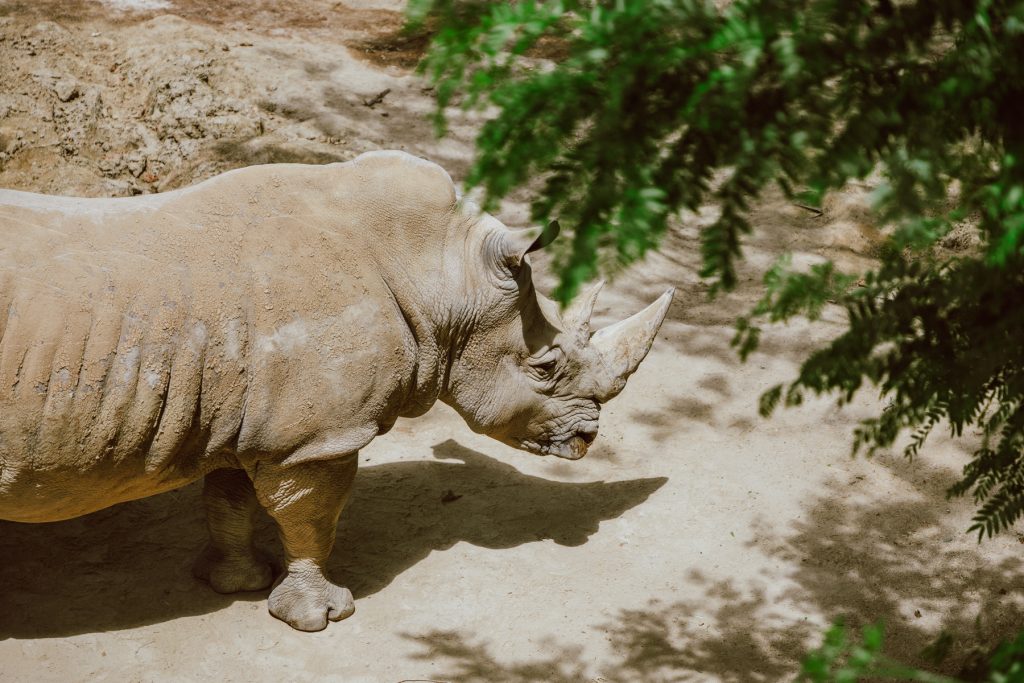
If you think, only animals that are far away, living somewhere on another continent are in danger, you’re wrong. Our own unique kiwi birds are not doing great as well. Every year we’re losing 2% of their population because of dogs, possums, cars. Read more about kiwi birds and how to help them in my article.

